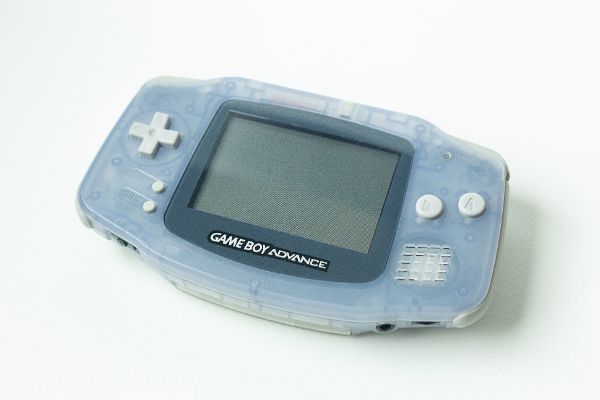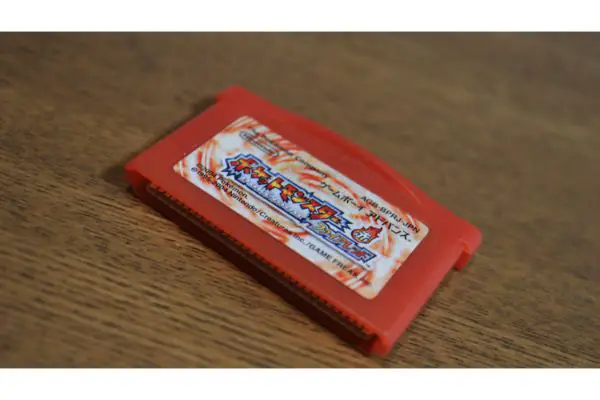Disclaimer: This post may contain affiliate links, meaning we get a small commission if you make a purchase through our links, at no cost to you. For more information, please visit our Disclaimer Page.
The Game Boy Advance, or GBA, is Nintendo’s successor to its previous Game Boy Color handheld console. Its worldwide release was in 2001, with China getting its version in 2004. The Game Boy Advance competed as part of the sixth generation of home gaming or portable consoles, pitting it against competitors such as Tapwave or Nokia.
However, Nintendo’s console far outstripped others in terms of sales, and it didn’t have much in the way of solid competition at the time.
With certain hardware upgrades, the Game Boy Advance supported many colorful, engaging titles during its initial release. Additionally, its processor is compatible with video games from both the original Game Boy and Color variations of the system.
Nintendo continued this trend when they released the DS as the successor to the Game Boy Advance. To further expand the handheld console’s functionality, Nintendo made it possible to play some GBA titles on the GameCube. In addition, several color options from which players could choose.
Table of Contents
Is There a Difference Between the Japanese and North American GBA Consoles?
Technically, there are some slight differences between the Japanese and North American versions of the Game Boy Advance. However, there are only a few significant differences, and some players may find these to be surface-level changes that don’t have much of an impact on anything important.
Packaging
The Japanese and North American Game Boy Advance models have different packaging based on specials or exclusives between regions. The most obvious is the language on the package display. Next are the graphics and artwork. Many franchise stores had their specials for the Game Boy Advance at launch, featuring text or colors unique to each chain.
Shell Variations
Similarly, Japan and North America received different colors or designs for the outer shells of the handheld consoles. For example, a player might purchase a Game Boy Advance in hues of blue, white, black, orange, pink, or translucent purple. Typically, Nintendo would give each of these colors unique names, such as Arctic or Glacier, to set them apart from each other and give the conventions a unique flair.
As time passed, the company released several other variations to the Game Boy Advance shells, some of which were specific to a particular region. In Japan, players received several kinds of GBA models featuring special edition shells with artwork depicting various Pokémon groups.
These limited editions would also have unique names for the colors, and these titles would match some of the franchise’s games. Japan also used colors not found in North America and not connected to a particular game franchise.
Can a GBA From Japan Play English-Language Games?
Yes. Game Boy Advance handhelds from Japan should be able to play games in English. That’s because the console does not have any region coding on it. We will talk about this in greater detail in our next section.
This lack of coding allows consoles from one region to connect with and play games manufactured for another area. Additionally, the hardware inside the two consoles is still the same.
There might be differences in the appearance between the two GBA consoles, but the parts inside did not change from one region to the next. Therefore, you can play games in English on a Game Boy Advance made in Japan.
What Is Region-Locking? Why Does It Matter?
Also referred to as region coding or regional lockout, region locking is a unique identification system manufacturers use for their products. It ensures that a particular device or piece of multimedia is only available in a specific area. Therefore, players cannot play certain games designed for another area.
Region coding applies to more than just games. Businesses may enforce a regional lockout through various physical or digital means. Even though it happens across different media types, it can differ from one industry to the next. Therefore, we will focus only on region coding concerning video games and their consoles.
Primarily, the purpose of region locking concerns pricing in different areas. Companies use a price model that allows them to sell goods at levels that consumers in different regions could meet.
For example, if a developer chooses to sell a game or console using a region’s currency standard, the price might be far too different in another market. As a result, there’s a loss of sales for another area.
Region locking solved this issue. With it, different markets would need to pay for games set in their pricing structures, and consumers could not use these items outside of the regions where the company released them. This also meant that customers in a market with a stronger currency could could purchase and use items at a cheaper price.
Can You Play Japanese Import Games in English?
Yes, it is possible to play Japanese games in English. However, it is not as simple as switching the languages in some options menu. Specific titles from that region may still use English as the primary language for most of the text they display.
Conversely, some games from Japan may have very little text, meaning players would only encounter some Japanese characters as they progress through the stories.
In other cases, it may not be necessary for gamers to read or understand much of the text in a particular game to enjoy it. There may not be one comprehensive list of Japanese Game Boy Advance titles that use English, but you can check sources online before you make any purchases.
The cartridge determines the language options for a particular game. Some gamers may think the console determines which language comes up on the display when they start a Game Boy Advance game. However, the reverse is true.
Why Do People Buy Japanese Import Game Boy Games?
Saving some money and getting exclusives are two significant factors that contribute to this. Some gamers want to play specific games that are rare in their areas.
Therefore, they must purchase and import them from Japan or other territories to get them. Additionally, it might be much cheaper to buy some titles of your choosing from Japan.
Similarly, some people may enjoy collecting general memorabilia of different Game Boy variations, including those with counterparts they could get in North American releases.
Conclusion
The Game Boy Advance is an improvement on previous console versions, and its sales during its launch show its popularity. Many years after its release, various online communities and fans enjoy talking about, tinkering with, and playing titles on Game Boy Advance consoles from North America and Japan. Although some games may have language barriers, they have simple narratives or controls that are easy for players to understand and master.


